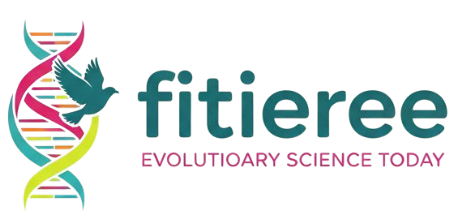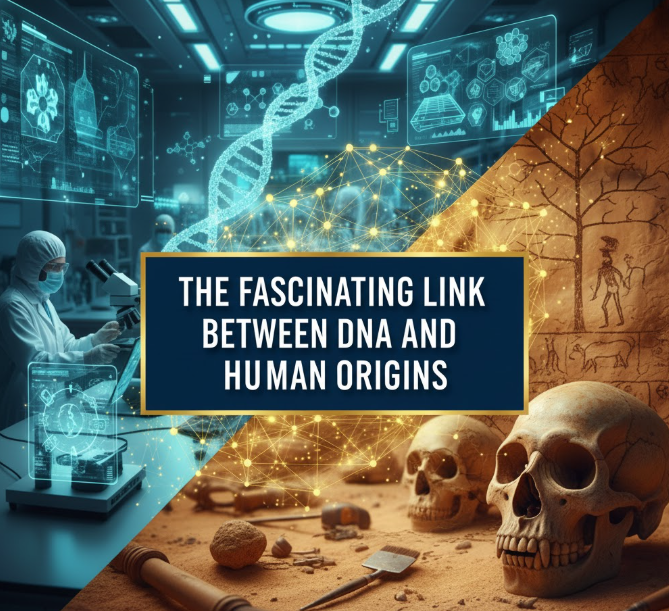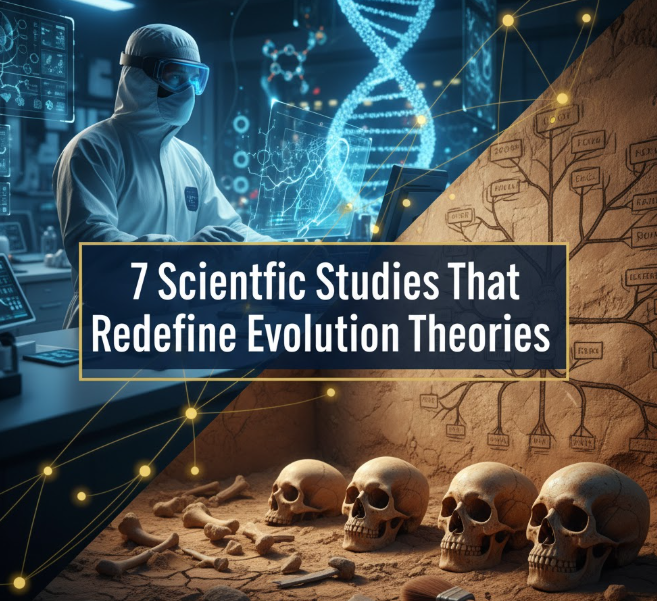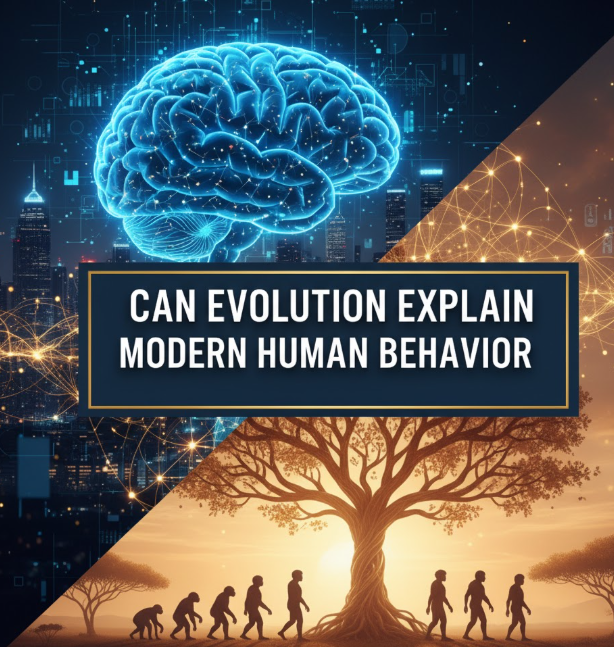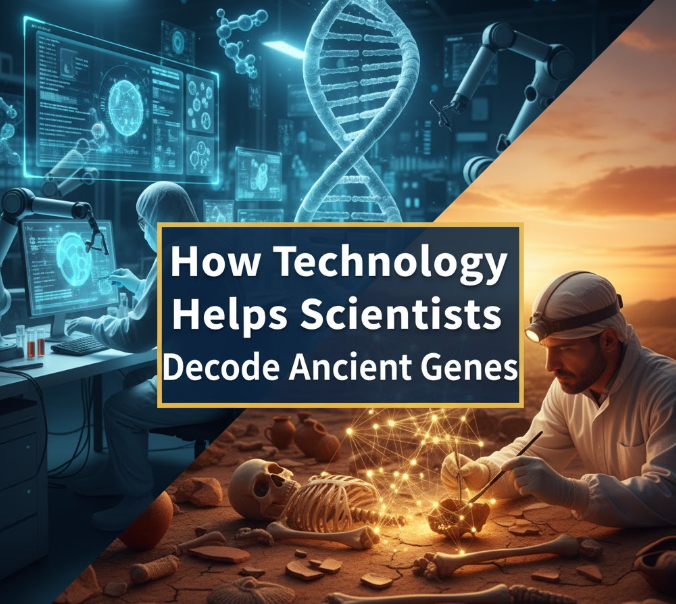Have you ever scanned your family members and noticed that you have your dad’s nose, or Mom’s eyes? That’s DNA at work. But DNA is revealing much more than just who we resemble. It’s more like a great big history book encrypted in microscopic code, which tells us where humans originate from, how we are all connected and what makes us different from other living beings. In the decades since, scientists have pored over this biological instruction manual — and what they’ve found inside is mind-boggling.
Each of us, each living person carries antiquity in their cells. These stories stretch back hundreds of thousands of years, all the way to our ancient human forebears who roamed Africa, weathered ice ages and populated nearly every inch of the globe. Insights from DNA, the story of humanity’s incredible journey across the planet is being rewritten — and none of us are quite who we thought.
What DNA Tests Really Tell Us About Our Ancestors
DNA is kind of like a recipe book that has gone through generations and generations. Your parents gave each of those halves a boost. This process has been underway since the first humans walked on this planet. But here’s the cool part: DNA doesn’t copy itself perfectly. These are tiny changes, or mutations that occur over time. Those mutations serve as bookmarks in history — they can help scientists understand when distinct groups of people separated from one another and where they went.
Put another way: if you and your cousin both have copies of Grandma’s cookie recipe, but each make slight adjustments over the years, someone analyzing those recipes could determine that they must have come from the same original source. DNA operates similarly, only in this case instead of cookies I’m referring to the blueprint for assembling a human being.
These small differences can be seen by researchers when comparing the DNA of people living in different regions of the world. The more differences there are between the DNA of two people, the longer time has passed since their ancestor split into separate lineages. The fewer the differences, the more recently they branched from a common ancestor. This approach has transformed the way we think about human history.
Africa: Birthplace of the Human Story
Go back about 300,000 years and everyone on the planet is African. Yes, you read that correctly — the ancestors of every human being on earth originated in Africa. This is not some airy-fairy idea — scientists have actually shown this based on DNA that they’ve looked at from people all over the world.
The evidence is overwhelming. All the time that scientists compare their material between these various populations, African pops have always had the greatest genetic diversity. What does this mean? That’s because human beings have been living in Africa for longer than they’ve been anywhere else, and there has therefore always been more time for genetic variations to accumulate. The groups that left Africa and spread to other continents have lower diversity because they are descended from smaller bands of people who brought only a fraction of the total variation found in their African ancestors.
One of the most famous lines of evidence involves mitochondrial DNA, which is transmitted from mothers to their children. Following this maternal line back across generations led scientists to what they’ve labeled “Mitochondrial Eve” — not the first woman, but the most recent common female ancestor of every living human. She dwelled at a place in Africa somewhere between 150,000 and 200,000 years ago.
Similarly, analyzing Y-chromosome DNA (handed down from fathers to sons), they tracked down “Y-Chromosomal Adam,” who also lived in Africa at roughly the same time. These conclusions are fairly straightforward: Modern humans first arose in Africa, and from there spread elsewhere.
The Great Human Migration: Why People Spread All Over the Earth
Then something extraordinary happened about 70,000 to 100,000 years ago. Thousands of years ago, groups of humans left Africa and spread out across continent after continent. This wasn’t a single-headed rush for the exits, but rather waves of migration that took place over several thousand years. DNA evidence has allowed scientists to map these ancient journeys in remarkable detail.
The Path Out of Africa
The first migrants probably swept across from northeastern Africa into the Middle East and western Asia. From that single cellar, some groups went east toward Asia and west to Europe. DNA markers serve as breadcrumbs along these ancient trails, pointing toward the routes our ancestors traveled.
Here’s an oversimplified timeline according to genetics:
| Era | Event | Migration | DNA Evidence |
|---|---|---|---|
| 70,000-100,000 years ago | First groups leave Africa via Middle East | Common genetic markers in Middle Eastern and African populations | |
| 50,000-60,000 years ago | Populations reach South Asia and Australia | Unique mutations found in Aboriginal Australian DNA | |
| 40,000-45,000 years ago | Arrival of humans to Europe | Genetic imprints on Europeans different from those on Asians | |
| 20,000-30,000 years ago | Rapid migration into East Asia | Genetic markers sweep across Asian populations | |
| 15,000-20,000 years ago | First human crossings into the Americas | Native American DNA linked to Siberian lineage |
All of these movements left genetic footprints that scientists can use to detect them to this day. For instance, Native Americans have certain DNA markers that directly trace them to populations in Siberia, showing that their forebears moved across a land bridge connecting Asia and North America.
Meeting Other Human Species: A DNA Surprise
Now here’s where the story really starts to throw sparks. For much of the past 150 years, scientists believed anatomically modern humans (Homo sapiens) didn’t mix with other human species. We thought that as our ancestors moved out, they simply replaced the other human-like species they encountered, such as Neanderthals in Europe and Denisovans in Asia.
DNA evidence showed that idea to be totally wrong.
In 2010, researchers were able to sequence the Neanderthal genome — the full set of DNA from these long-dead human cousins. When they compared it to the DNA of modern humans, they found something amazing: Many of today’s people have some Neanderthal DNA! If you have ancestors who once lived outside of Africa, then likely, your genome contains around 1-2% Neanderthal DNA.
That’s to say, when modern humans began moving into Europe and Asia 60,000 years or so ago, they weren’t just replacing Neanderthals — they were also interbreeding with them. Such intermixed relationships played out tens of thousands of years ago, and these Neanderthal genes spread down through so many generations until they came to you.
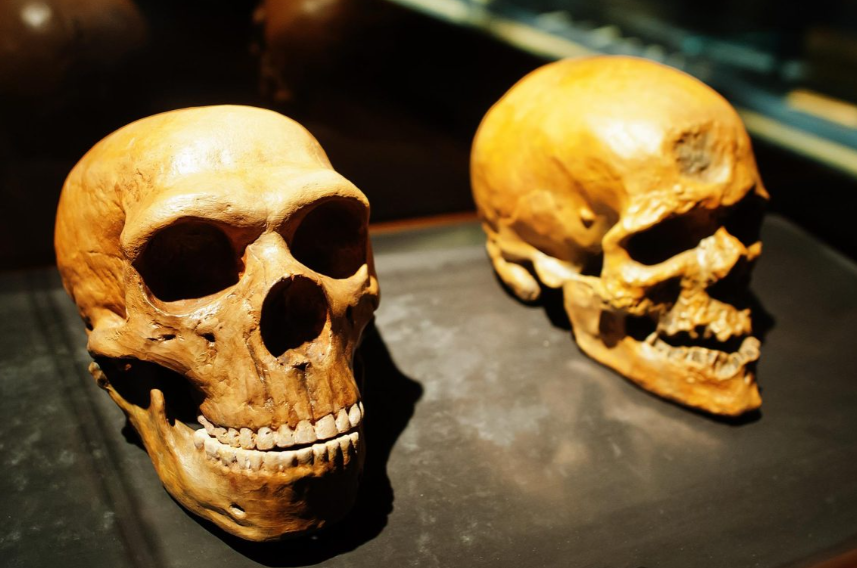
What Has Neanderthal DNA Done for Us?
Certain Neanderthal DNA has hung on because it was actually useful. Researchers have found that certain Neanderthal genes influence:
- Immune system (aid to fight diseases)
- Types of skin and hair (adaptation to climate)
- Pain tolerance and perception
- Sunlight response and vitamin D synthesis
In a similar pattern, Denisovan DNA (another extinct human cousin known only from DNA evidence) also is present in modern populations of Southeast Asia, Australia and the Pacific Islands. Some Tibetan populations even harbor a Denisovan gene variant that helps them to survive at high altitude, where oxygen is limited.
DNA Detective ‘Worked Hard’ to Find How Scientists Study Ancient Humans
You might ask how scientists can study DNA from people who died thousands and thousands of years ago. It may seem impossible, but technology has made it possible.
When archaeologists do turn up bones or teeth from bygone millennia, they can occasionally fish out tiny samples of DNA that have survived. They are monumentally fragile, usually damaged samples — but even scant amounts of genetic material can be amplified and sequenced using modern laboratory techniques.
The process involves:
Meticulous extraction: Drill or scrape into ancient bones or teeth to gather powder samples
Isolation of DNA: The process of extracting DNA using chemicals to remove it from other substances in the cell.
Sequencing: Fancy machines read the genetic code letter by letter
Computer analysis: Sophisticated software reassembles fragments and compares them to modern DNA databases
The oldest human DNA successfully recovered until now is about 400,000 years old, though most ancient DNA research has involved samples between 50,000 and 200,000 years old, when preservation conditions are more favorable.
It’s in Our Genes: Regional Adaptations
As humans migrated to various regions throughout the world, they encountered different environmental pressures. It now enables DNA to tell us how we adapted to these different circumstances through natural selection.
Adapting to Climate
Those who lived closer to the equator evolved high levels of melanin (the pigment that gives skin its color) in order to defend against intense UV radiation. Populations that migrated to northern latitudes, with a weaker sun, developed lighter skin (and thus less protection against sunlight) and sweat more effectively; the latter helps produce vitamin D with less sunlight.
Food and Digestion
Most Europeans and some African and Middle Eastern populations developed the ability to digest lactose (the sugar in milk) during adulthood. That genetic switch occurred only in the past 10,000 years or so, after humans started domesticating cattle and drinking milk. Most of the world’s population remains unable to do so after infancy, in a sign that their ancestors didn’t survive on dairy farming.
High-Altitude Living
Andean and Tibetan populations both have genetic adaptations that help them survive at high-altitude. Tibetans possess genes (some passed down from Denisovans) that influence how their bodies use oxygen. Andeans in South America evolved other genetic solutions to the same problem — a striking example of evolution finding multiple ways of getting the same job done.
Disease Resistance
Some populations possess less permissive genetic variants for diseases prevalent in their regions. Sickle cell trait (which can result in sickle cell disease when present from each parent) is one; however, the heterozygous state actually confers resistance to malaria. This feature prevails in areas with past habitual malaria.
What Separates Humans From Other Apes
We share 98-99% of our DNA with chimpanzees, our closest living primate relatives. One percent might seem like a whisker of variation, a trivial scattering of genetic crumbs, but all that separates us from the chimpanzee is tucked away in that small percentage.
Key genetic differences include:
Genes for Brain Development: Humans have mutations in genes that govern brain size and complexity. We have comparatively larger brains relative to body size than the other apes, and more complex interconnections between neurons in our brains.
FOXP2 Gene: Dubbed the “language gene,” this gene is responsible for speech and language. Humans have a version of the gene that is distinct from the chimpanzee copy in just two amino acid substitutions — but those changes seem to be crucial to our ability to produce complex speech.
Hand Dexterity: Changes in the genes that influence hand and finger control allowed us to make and use complex tools with a level of precision unmatched by other apes.
Slower Development: Humans develop at a slower pace than other primates. Genetic changes gave us a longer childhood, allowing for more time to learn complex skills and behaviors.
Genetic Diversity: Why We Are All Brothers and Sisters
Here’s one that may surprise you: Humans have less genetic diversity than many other species. If you compared the DNA of two chimpanzees from different parts of Africa, there would be more genetic difference between them than between any of us sharing one continent as humans.
Why? Because humans experienced a population “bottleneck.” At some indeterminate time in the past — maybe 70,000 years ago — something (maybe because of a volcanic eruption or a change in climate) compelled all human populations at the time to take a nosedive. The entire human population in the world might have dwindled down to only a few thousand people.
And that means everyone alive today is descended from a relatively small surviving group. We’re all a great deal closer kin to one another than you might assume. In fact, any two individuals sampled at random share approximately 99.9% of their DNA sequence. All of the human diversity that we see, in terms of different features, different skin colors, different heights… comes from only 0.1% genetic variation.
And this undermines an important message: something as scientifically pernicious as race doesn’t exist genetically. The physical variations that we can see are superficial adjustments to various ecological conditions. From a genetic standpoint, there’s no such thing as a pure racial group. Humans have been mixing and migrating for all of history, and we now have a tangled mess of genetic connections.
Ancient DNA Rewrites History Books
A few of these DNA revelations have overturned our previous understanding of history altogether.
The Peopling of the Americas: Scientists argued for decades over when and how humans first arrived in the Americas. DNA evidence now demonstrates that the majority of Native American ancestry is derived from a single group of migrants that separated from East Asians and crossed into Alaska via a land bridge over the Bering Strait, no more than 23,000 years ago. But, and this is recent research, human migration was not so simple and single-wave but rather multiple waves of people arrived at different times.
The Ghost Population: DNA analysis sometimes picks up the traces of so-called “ghost populations,” which are ancient human groups known exclusively by the DNA they left in the more recent ones. An example of such population is the mysterious group of humans that had intermingled with both Neanderthals and modern humans but had never had their own fossils discovered.
Indo-European Languages: The spread of related languages across both Europe and Asia had long puzzled linguists. DNA research demonstrated that, 5,000 years ago, there were large populations’ movements from the Eurasian steppes that carried both language and genes across the continent.
Your Personal DNA Connection to the Ancient Humans
Nowadays, many people can uncover at least some of the secrets of their genetic heritage owing to consumer DNA testing. Such tests can help you discover fascinating details about your ancestry and connect you to populations from around the world. Learn more about how genetic ancestry testing works and what it can reveal about your personal history. While the test’s results might be limited and not all-inclusive, they still offer regular individuals a unique way to see the ancestral past. Most people discover some unexpected genetic connections that allow us to form a better understanding of the complex and rich human history of the past.
The Future of the DNA Research in Human Origins
Yet the ancient DNA field continues advancing with great speed. Numerous new methods are being developed each year that can facilitate the genetic analysis and extraction from the contaminated and older samples.
For future research, other exciting research directions include:
AI and Machine Learning: Applying artificial intelligence to scour massive genetic datasets for patterns that humans might miss — which could in turn expose subtle population movements and interactions we haven’t yet uncovered.
High resolution complete ancient genomes: With ongoing technological developments, researchers are attaining higher quality complete genomes from ancient individuals enabling even more precise details about their lives, customs, health and their relationships.
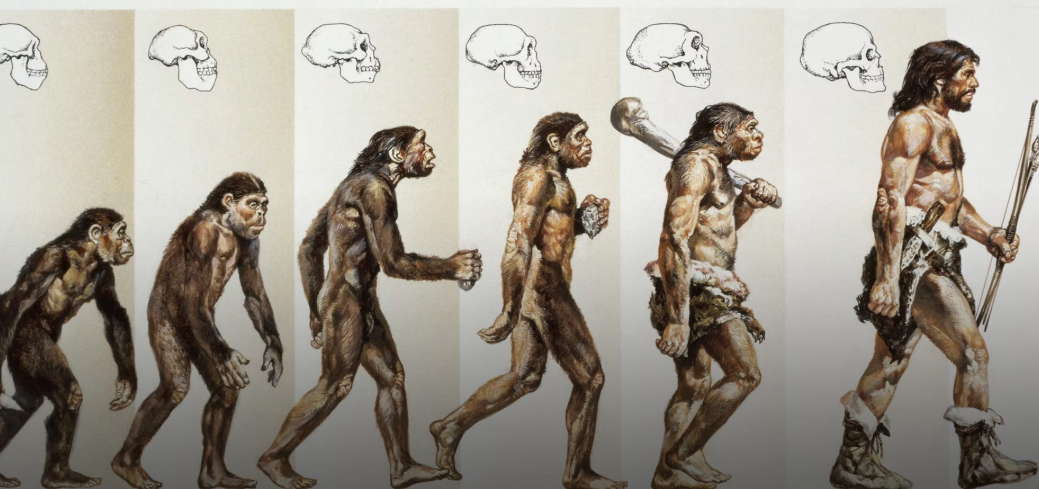
Frequently Asked Questions About Human Origins and DNA
Could DNA tell us what ancient humans looked like?
Yes, to some extent. There are certain physical traits that scientists can predict from ancient DNA — among them, skin color, hair type and texture, eye color and perhaps even some aspects of the face. But looks are complicated and affected by many genes, so predictions can be imperfect.
Why is there such a surge of interest in African genetic diversity?
The highest genetic diversity is in Africa, where humans have been for the longest time. This diversity is a genetic treasure trove that can assist scientists in interpreting human evolution and may be valuable for medical research, they said, since rare genetic variants might provide hints about disease resistance or other characteristics.
Did all people really originate from one woman and man?
Not exactly. “Mitochondrial Eve” and “Y-Chromosomal Adam” were not the only people living in their time — they’re simply whose maternal and paternal lines ultimately lived on to the present generation. Many others lived alongside them, but their mitochondrial or Y-chromosome lineages died out over time.
How reliable is DNA testing for ancestry?
Commercial ancestry tests are generally useful for recent ancestry (up to a few hundred years) and continental level origin. Yet they have shortcomings in determining specific countries or ethnic groups, particularly the farther back you look. The results are only as good as the reference populations in the company’s database.
Might we recover DNA from even more ancient human species?
DNA breaks down over time, and preservation conditions make a world of difference. The oldest recovered hominin DNA to date is approximately 400,000 years old and was extracted from remains in Spain, which had been preserved under very cold conditions. Although we will probably never recover DNA older than that of a fringe group like Homo erectus (which lived more than 2 million years ago), this is because DNA just doesn’t last.
What is the single biggest mystery remaining about human origins?
Many mysteries remain! The precise reasons humans evolved such enormous brains, the nature of language and why only one human species survived are still subjects of debate among scientists, as are some of the major migrations. Almost any new finding along the DNA trail tends to raise as many questions as it answers.
Why This All Matters Today
Learning more about DNA and human origins is not just a matter of curiosity about the past — it has powerful implications for our present and future.
Medical Uses: Clues for battling disease come from diversity in DNA. By learning why some populations are immune to certain diseases, scientists may be able to create better treatments for everyone.
Confronting Prejudices: DNA technology confirms conclusively every human is of the same species with only superficial differences. It subverts racist ideas of distinct races that is premised on the myth.
Climate Change Insights: Taking a lesson from ancient people on how to cope with shifting climates can prepare us for the environmental challenges we face.
Understanding Human Behavior: If we know where we came from, perhaps it will tell us something about who we are and why human behavior may be what it is and think in terms that lead somewhere.
The Tale in All of Your Cells
DNA has opened up a totally novel window on human origins. We now know for sure that all of humanity shares common ancestors who lived in Africa, that human beings ranged across the globe in waves over tens of thousands of years, and that we interbred on several occasions with other species.
Every human being bears genetic echoes of those ancient journeys. Your body is a mosaic, and if you aim your sequencing lens at you, you might come into clearer focus. Your genome is a field of broken mosaic tiles — few genes are completely good or bad; the impact of each depends on time and place. It includes chunks from humans who survived ice ages, crossed trackless oceans, conquered mountains and learned to thrive in deserts, forests and the frozen tundras of the Arctic Circle.
This genetic narrative links all of humanity in an incredibly literal sense. We speak many languages, embrace many cultures and follow many traditions, but share as few as a couple of hundred generations of common love and commitment. We are all Africans, in the deepest sense of the words, for that’s where humanity began.
The march of technology will yield even wilder nuggets about human origins, without a doubt. But the basic story is redundant: that we are all one human family with a single origin and journey of transformation over time. This is a story that has been written in the most indelible ink possible — DNA; it’s found in every cell of your body.
Next time you hold your hands in front of your face, look at yourself in the mirror or gaze upon your family members, take note that you’re just taking a peek at the present. You’re staring at the end product of an unbroken line that goes back hundreds of thousands of years, right to the very first people who walked under African skies and dreamed of a horizon far beyond.
